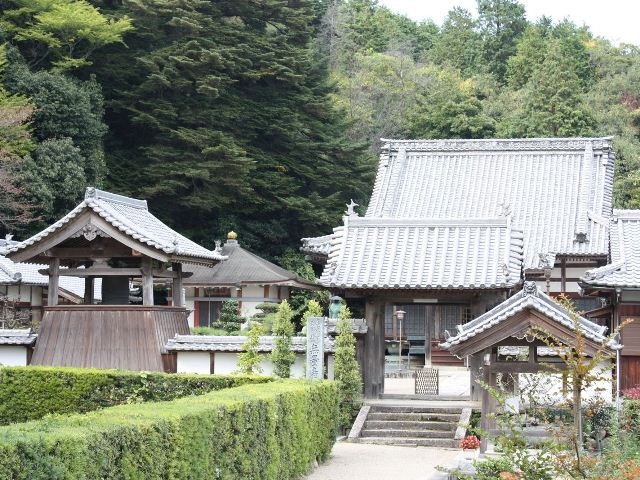
Muryō Jufuku-ji Temple is located between Iga City and Nabari City. There are mountains to the west and the Nagata River (Kizu River) running north to south in the immediate vicinity, into which the Hijiki River flows from the east.
It was operated around the beginning of Bunsei Era by Kōnen , who was born in Mita-so in Iga Province (“本朝高僧伝”). A number of priests seem to have come to this area before that time, one of them is Shōichi-kokushi. The “伊水温故 Isui-ungo” describes that when he saw the scenery here, he said, “The name of the mountain is Tendousan because it resembles the zuidai of Tendousan Kyoutokuzenji Temple in Zhejiang Province, one of the Five Great Mountains of China”, and from this the name of the mountain, “Tendousan” is derived.
The “伊水温故 Isui-ungo” describes the temple as having “a main hall with 13 rooms and four sides, a Gomado, a guest hall, a dining hall, a bell tower, and other dignified features” indicating that it was a rather splendid temple. However, it was burnt down in the war of 1581.
The progress of the war is described in detail in “伊乱記 Iranki,” a book on the Tenshō Iga War, a battle between the Oda clan and the Iga Sōkoku Ikki (Ikki means a group of warriors and farmers organized for a common purpose). In the “巻之一 無量寿福寺の来由”, this temple is described, followed by the construction of Maruyama Castle by Oda Nobukatsu in order to overthrow Iga. Then, in “巻之二 丸山合戦” it continues with the statement, “The residents gathered at Mount Tendou because of a plot to kill the brave warriors of Iga and take control of the area. The Iga-mono, who had been threatened by the Oda clan, gathered at Muryō Jufuku-ji Temple, where they thought of conquering Maruyama Castle, and successfully forced the Oda clan to withdraw from the area.
However, during the Second Tenshō Iga War, the temple became the site of a meeting of Jizamurai, the Iga local samurai, and was burned down in battle. Only two statues, Amida Nyorai and Daikokuten were not burnt, and the temple was later restored to the present day.